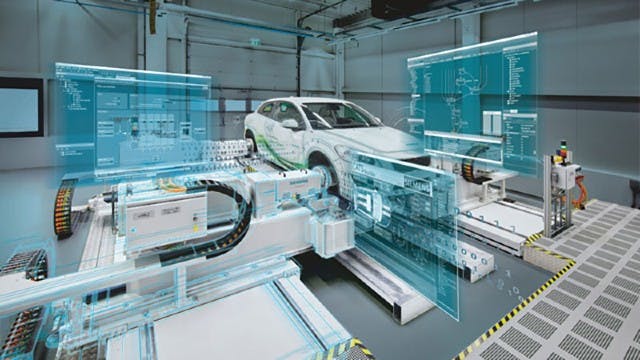Vehicle electrification is here to stay, and original equipment manufacturers (OEMs), suppliers, and new entrants, who only produce electric vehicles (EVs), need the proper infrastructure to keep innovation pace. At the same time, suppliers are evolving their portfolios to remain competitive as electronic components will be a crucial differentiator for electric cars.
In this webinar, discover how data standardization and digital twin technology can help electronics manufacturers succeed in this complex new arena — Register to watch now!
Manage electric vehicle manufacturing challenges
The EV transformation will provide an excellent opportunity for growth at the cost of more significant risks. OEMs focusing on vehicle electrification continue to ask for a shorter time to market as product complexity increases drastically. At the same time, regulations and cross-company tracking and tracing of modules, parts, and components are increasing the complexity of collaboration dependencies with automakers and suppliers.
Maximize production efficiency in electric vehicle manufacturing
Automakers and new entrants need flexible plants that can adapt to change at a breakneck pace to thrive in the new market. However, most facilities today include disconnected silos and domains, and data preparation and machine programming are time-consuming and must be repeated at every site. Engineering changes are not tracked, causing redundancies and loss of knowledge.
Implement a comprehensive digital twin in the EV manufacturing process
Manufacturers need to break down the silos with an integrated solution for electronics manufacturing across all facilities, including data standardization to support automation and physical production system data to create a “digital twin” for every phase of the innovation process. The digital twin saves valuable time and resources while enabling earlier identification of issues and faster responses to problems.
